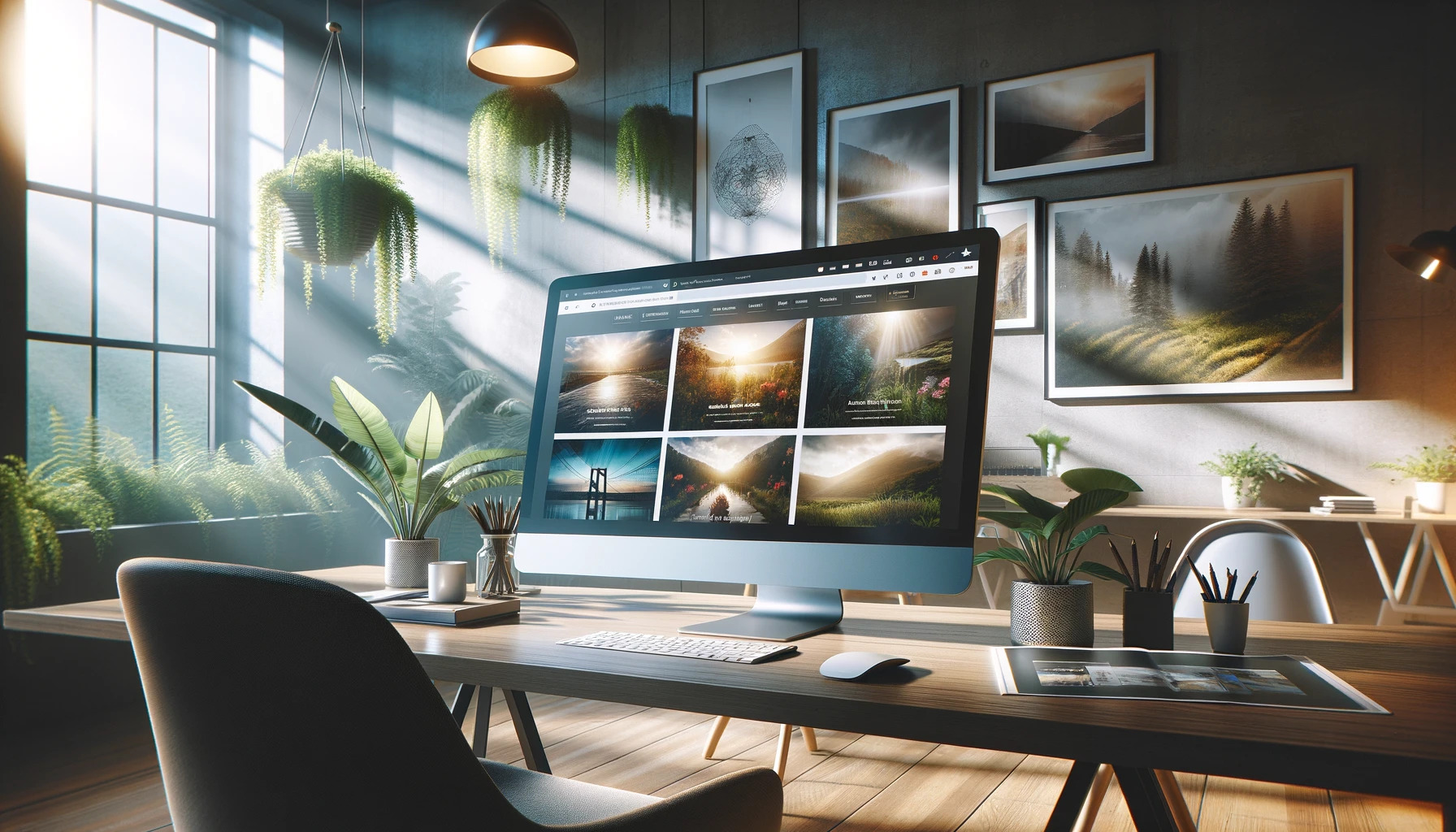Leverage High-Quality Images for SEO in Web Design
By Nick
Published March 5, 2024
 Leverage High-Quality Images for SEO in Web Design
Leverage High-Quality Images for SEO in Web Design
In the digital realm, SEO and web design go hand in hand, shaping the success of any online presence. Among the myriad of strategies to boost a website's search engine ranking, one stands out for its dual impact on both user experience and SEO: the use of high-quality images. This article dives deep into the realm of leveraging high-quality images for SEO in web design, ensuring every pixel contributes to your site's visibility and allure.
The Power of High-Quality Images in SEO
At the core of effective web design lies the ability to communicate, engage, and convert. High-quality images serve as the linchpin in this process, offering a visual feast that captivates and retains visitor attention. However, their benefits extend beyond aesthetics, directly influencing SEO through:
- Enhanced User Engagement: High-quality images make your website more engaging, reducing bounce rates and signaling to search engines that your site offers value, thereby improving your rankings.
- Better Context for Search Engines: Through optimized alt tags, captions, and surrounding content, high-quality images provide context to search engines, making your website more relevant to specific queries.
- Increased Social Shares: Visually appealing content is more likely to be shared, generating backlinks and social signals that bolster your SEO efforts.
Implementing High-Quality Images in Web Design
Leveraging high-quality images for SEO requires more than just selecting stunning visuals. Here's how to ensure your images work both for your audience and search engine crawlers:
Choose the Right Images
Select images that resonate with your brand and message. Authentic, high-resolution photos tailored to your content can significantly enhance user experience and SEO.
Optimize Image Size and Quality
Optimizing high-resolution images for faster loading is crucial. Large, unoptimized images can slow down your site, harming your SEO. Tools and techniques for upscaling images for web design allow you to maintain visual quality without compromising load times.
Use Responsive Images for Web Design
Responsive images for web design ensure that your images look great on any device, improving user experience and SEO. By adjusting image size based on the viewer's screen, you enhance site speed and performance across all platforms.
Select the Appropriate Image Format
The choice of image formats for upscale web design can significantly affect your site's loading speed and visual quality. Formats like JPEG, PNG, and WebP offer different balances of quality and file size, making it essential to choose wisely based on your needs.
Leverage Upscaling Techniques
Upscaling images for web design allows you to enhance lower-resolution images for higher quality without the need for extensive bandwidth. This technique is invaluable for maintaining a sleek, professional look while optimizing performance.
Implement SEO Best Practices for Images
Incorporate keywords into your image file names, alt attributes, and captions. This not only makes your website more accessible to users with screen readers but also provides search engines with valuable context, improving your visibility in image search results.
The Impact of High-Quality Images on SEO Performance
The strategic use of high-quality images can significantly impact your SEO performance. Websites that master the art of upscale image selection and optimization enjoy higher rankings, more traffic, and better engagement rates. By enhancing the visual appeal and user experience of your site, you signal to search engines that your content is valuable, relevant, and worthy of a top spot in search results.
Moreover, the integration of optimized, high-quality images facilitates a richer user experience, encouraging visitors to spend more time on your site and explore more content. This increased engagement further signals the quality of your site to search engines, creating a positive feedback loop that boosts your SEO.
Conclusion
In the competitive landscape of digital marketing, the nuanced use of high-quality images in web design can set your website apart, enhancing both user experience and SEO. By selecting the right images, optimizing their size and format, and adhering to SEO best practices, you can ensure that every image on your site serves as a powerful tool for engagement and visibility.
Remember, in the digital age, a picture is worth more than a thousand words—it's worth invaluable clicks, views, and rankings. Embrace the strategic use of high-quality images, and watch as your website rises to new heights in the search engine results pages.